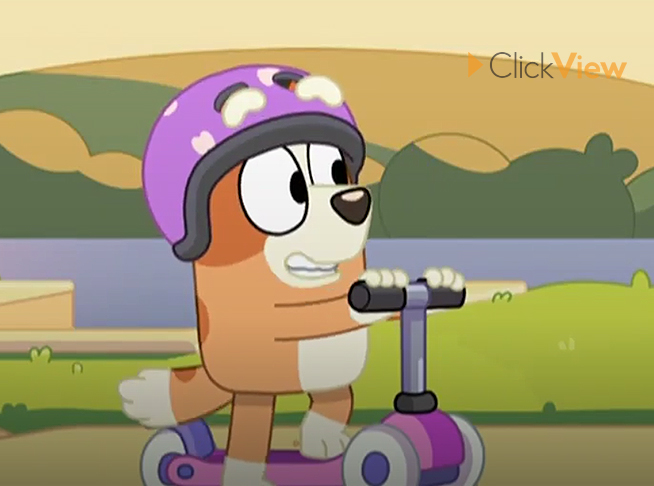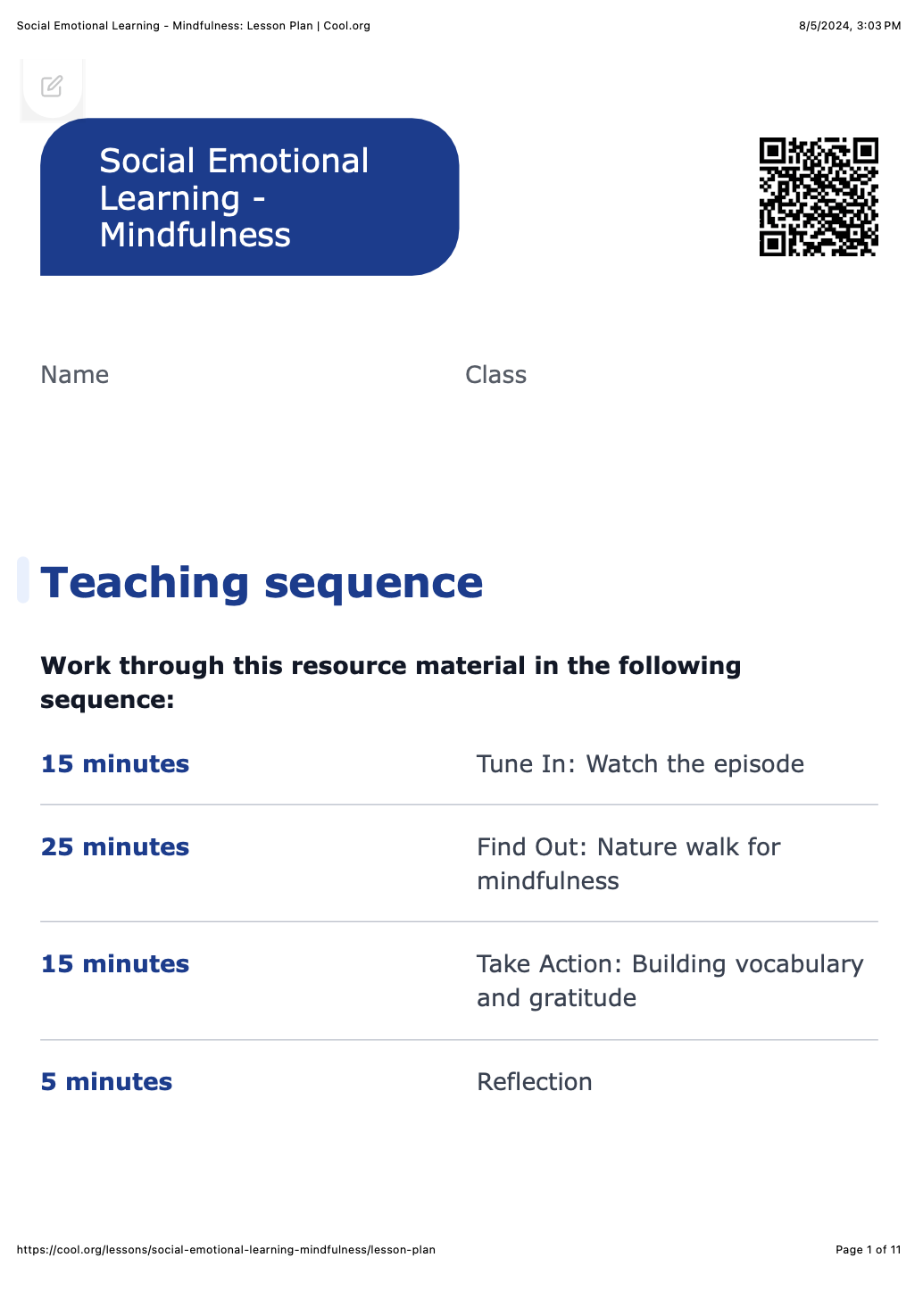Lesson summary
The animated series Bluey serves as a valuable tool in fostering children's development of imagination, curiosity, and social and emotional learning.
This lesson focuses on the capability of mindfulness. Students will take a nature walk, using their senses to engage the world around them and build their vocabulary as they describe the things they can see and hear in detail.
This suite of resources supports emotional and social learning and oral language development through a values framework. Each lesson uses intentional teaching strategies to develop a specific value. This lesson focuses on...

Click here for a full list of the values that underpin these lessons.
This lesson showcases a Bluey episode, which can be viewed on ClickView. Don't have a ClickView subscription? Bluey is also available on ABC iView. For real life!
Learning intentions
Students will:
- explore the natural world around them
- practice grounding themselves as a way of being present in the moment.
Success criteria
Students can:
- use their senses to discover and engage with the world around them
- use colourful adjectives to describe what they see, hear and feel
- use mindful breathing techniques to engage with a calm state of mind.
Lesson guides and printables
Curriculum links
Select your curriculum from the options below.
Lesson details
Curriculum Mapping
Australian Curriculum (v9.0) content description:
Foundation Year English
- Explore different ways of using language to express preferences, likes and dislikes (AC9EFLA02)
- Recognise that sentences are key units for expressing ideas (AC9EFLA05)
- Recognise and develop awareness of vocabulary used in familiar contexts related to everyday experiences, personal interests and topics taught at school (AC9EFLA08)
Year 1 English
- Explore language to provide reasons for likes, dislikes and preferences (AC9E1LA02)
- Understand that words can represent people, places and things (nouns, including pronouns), happenings and states (verbs), qualities (adjectives) and details such as when, where and how (adverbs) (AC9E1LA07)
Year 2 English
- Explore how language can be used for appreciating texts and providing reasons for preferences (AC9E2LA02)
Foundation Health and Physical Education
- Participate in a range of activities in natural and outdoor settings and explore the benefits of being physically active (AC9HPFM03)
- practise fundamental movement skills in minor game and play situations (AC9HPFM01)
Year 1 & 2 Health and Physical Education
- Investigate a range of health messages and practices in their community and discuss their purposes (AC9HP2P06)
- Participate in a range of physical activities in natural and outdoor settings, and investigate factors and settings that make physical activity enjoyable (AC9HP2M03)
Foundation Visual Arts
- use play, imagination, art knowledge, processes and/or skills to discover possibilities and develop ideas (AC9AVAFD01)
- create art works that communicate ideas (AC9AVAFC01)
Year 1 & 2 Visual Arts
- experiment and play with visual conventions, visual arts processes and materials (AC9AVA2D01)
- use visual conventions, visual arts processes and materials to create artworks (AC9AVA2C01)
Syllabus outcomes: ALES1.6, MOES1.4, GSES1.8, SLS1.13, PHS1.12, VAS1.1, VAS1.2, ENe-6B, ENe-9B, ENe-6B, EN1-9B, EN1-6B
General capabilities: Literacy, Critical and Creative Thinking
Relevant parts of Foundation Year English achievement standards: Students can share thoughts and preferences, retell events and report information or key ideas to an audience. They read, view and comprehend texts, making connections between characters, settings and events, and personal experiences.
Relevant parts of Year 1 English achievement standards: Students can share ideas and retell or adapt familiar stories, recount or report on events or experiences, and express opinions using a small number of details from learnt topics, topics of interest or texts. They identify the text structures of familiar narrative and informative texts, and their language features and visual features.
Relevant parts of Year 2 English achievement standards: Students can share ideas, topic knowledge and appreciation of texts when they recount, inform or express an opinion, including details from learnt topics, topics of interest or texts.
Relevant parts of Foundation Health and Physical Education achievement standards: Students identify the benefits of being physically active and how rules make play fair and inclusive.
Relevant parts of Year 1 & 2 Health and Physical Education achievement standards: Students can explain why health information is important for making choices. Students apply fundamental movement skills in different movement situations and describe factors that make physical activity beneficial.
Relevant parts of Foundation – Year 2 Visual Arts achievement standards: Students make artworks in different forms to express their ideas, observations and imagination.
Level of teacher scaffolding: Low - Teachers scaffold students using unfamiliar vocabulary to describe their experiences.
Resources Required
- Art supplies – coloured pencils and markers
- Device capable of presenting a video to the class
- Whiteboard
- White paper – A4 size.
Additional Info
This is not an official Bluey lesson. Cool.org does not have an official partnership with Bluey.



Welcome back!
Don't have an account yet?
Log in with:
Create your free Cool.org account.
Many of our resources are free, with an option to upgrade to Cool+ for premium content.
Already have an account?
Sign up with:
By signing up you accept Cool.org's Terms and Conditions(Opens in new tab) and Privacy Policy(Opens in new tab).